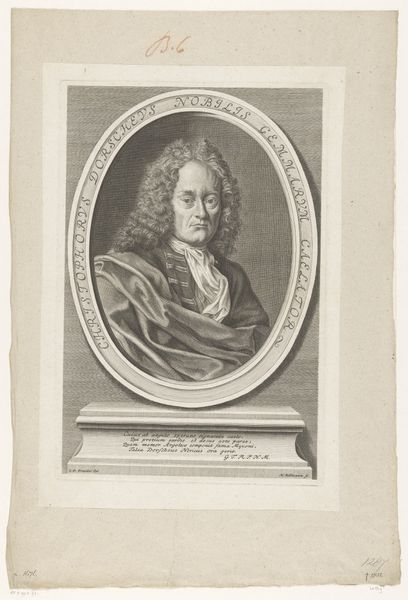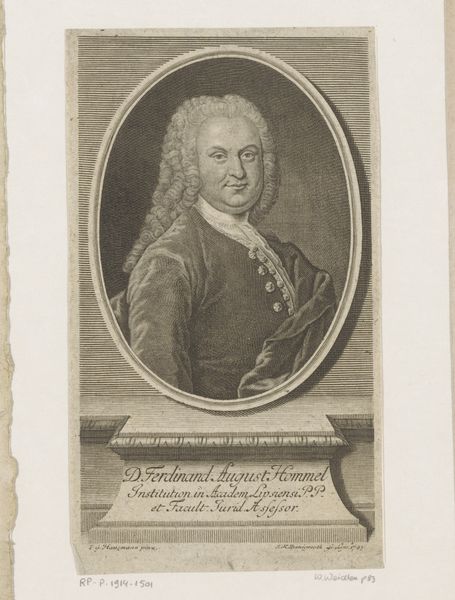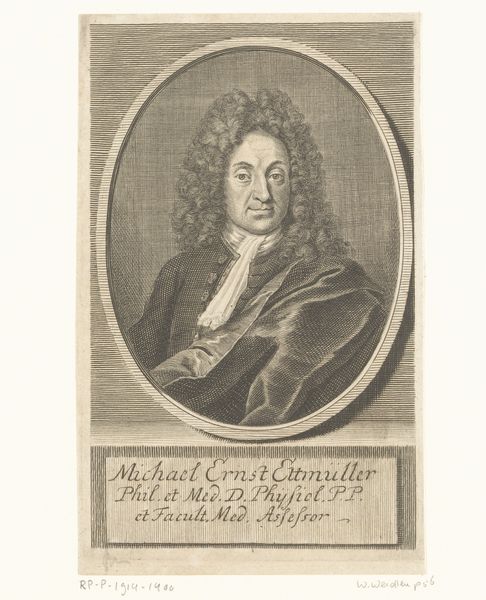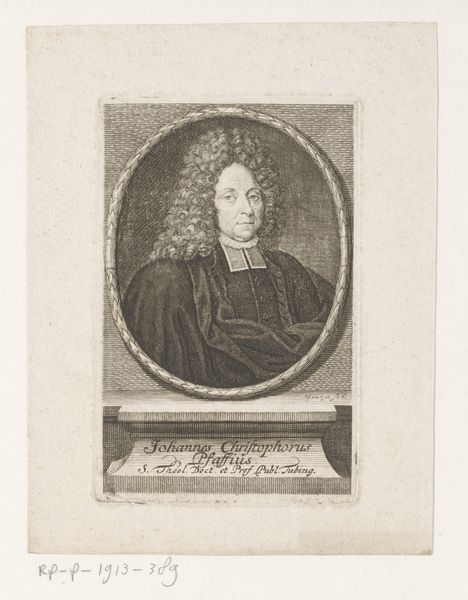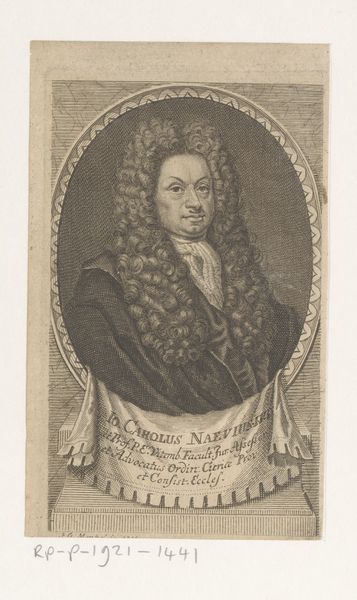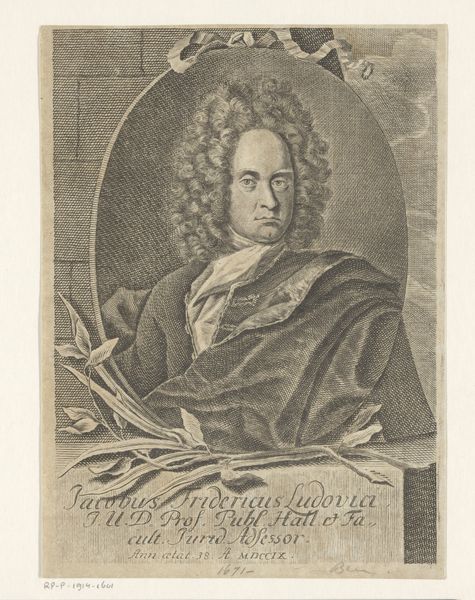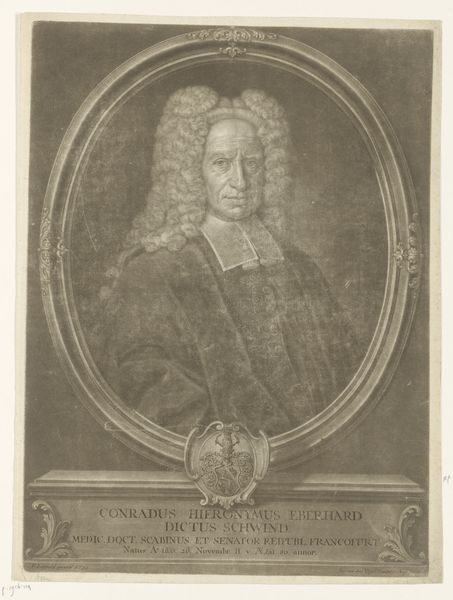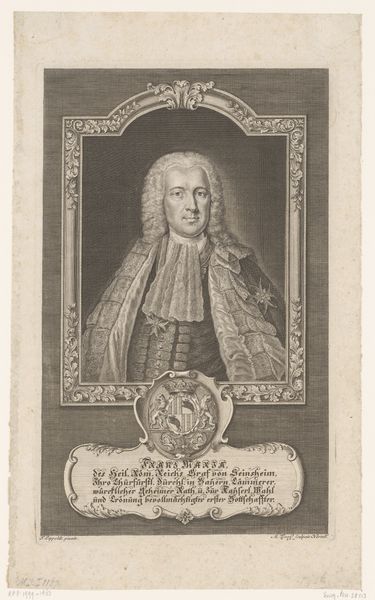
engraving
#
portrait
#
baroque
#
engraving
Dimensions: height 313 mm, width 202 mm
Copyright: Rijks Museum: Open Domain
Curator: Oh, hello. Right in front of us, we have "Portret van Samuel Stryk," an engraving dating from 1710-1755, currently held here at the Rijksmuseum. It’s quite the imposing image. Editor: It really is. The first thing that strikes me is the sheer amount of effort involved in creating this image. The details on the wig alone—the level of skill required to capture that texture with an engraving tool…astonishing. Curator: Indeed, and it brings a question: imagine sitting for hours, while someone etches your likeness into metal. One feels, perhaps, a profound sense of self-importance, wouldn’t you agree? I mean, look at the wig! It’s not just a wig; it's a statement! It speaks volumes about status, wealth, and baroque exuberance. Editor: Absolutely, the wig is almost a material stand-in for the power structure itself, manufactured through intense labor and signifying class. The inscription at the bottom details Samuel Stryk's titles, further cementing his place in that structure. I would be interested to see how this engraving would reach wider audiences beyond Stryk's immediate circles, serving perhaps, as a piece of political propaganda? Curator: That’s fascinating, a piece of propaganda—or, perhaps a tool for immortalization. Don’t you find something intensely personal in its details? In his gaze there's this... I want to say, gentle introspection? It's as if the artist is trying to capture more than just Samuel Stryk's physical likeness but a glimmer of his very soul. Editor: It’s an interesting thought. Although, let’s consider the medium. Engravings like these, at the time, they were made with a clear understanding of reproduction in mind. Their purpose often went far beyond memorializing. I wonder, how much Stryk truly cared for posterity's judgement of his soul? More likely, he was interested in asserting his importance at a particularly volatile political moment, as seen in his self promotion through dress. Curator: Perhaps it’s both, really? A public statement and a private reflection, intertwined through the artist’s hand and Stryk’s... personality, captured in ink. I am really captivated. Editor: I suppose there is no limit in our speculating the intentions behind Baroque portraits such as this one! Overall, the detailed execution reveals a system of patronage and material means, reflective of Samuel Stryk's status as much as it reveals something profound about our relationship to the political.
Comments
No comments
Be the first to comment and join the conversation on the ultimate creative platform.
